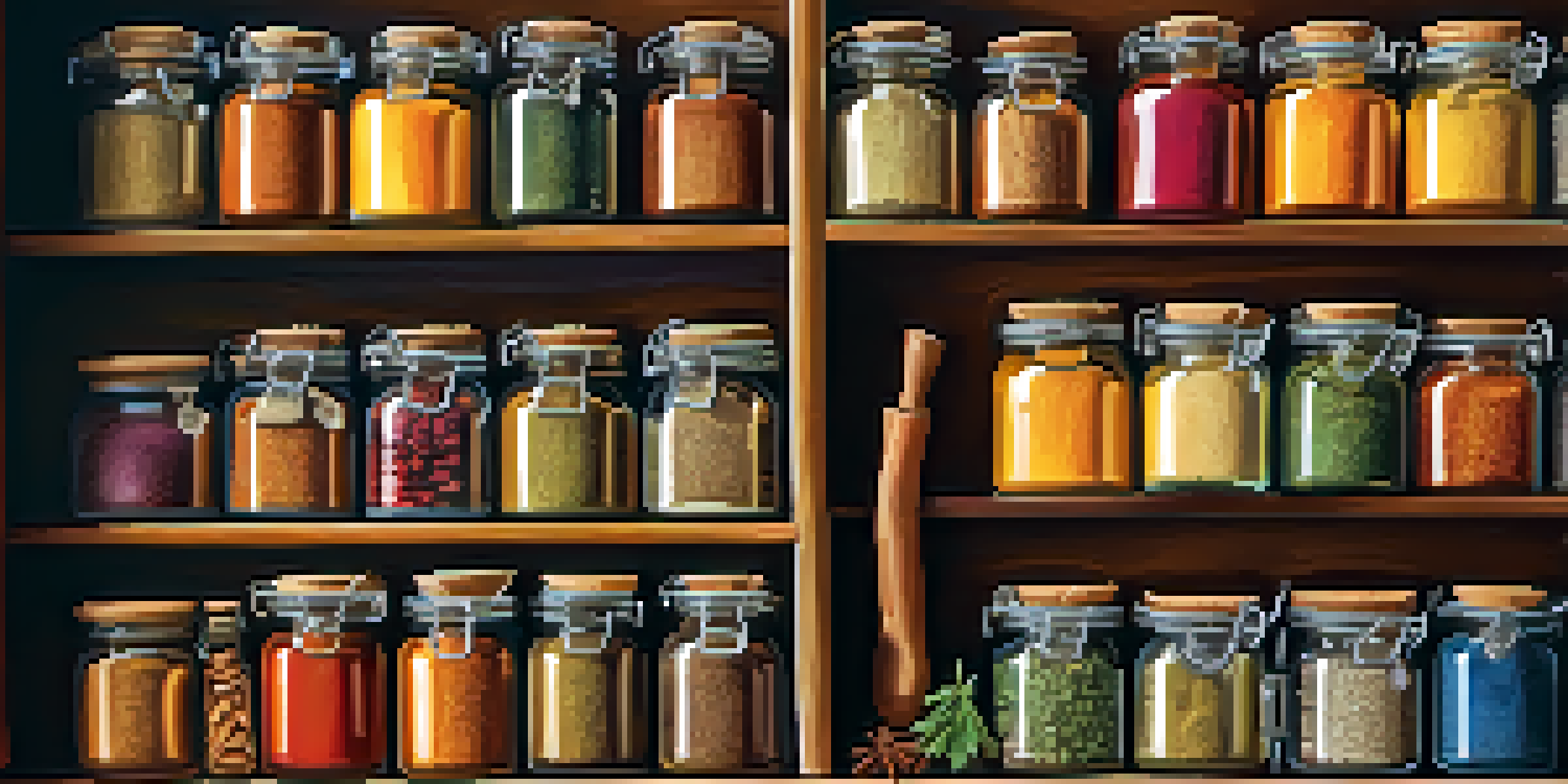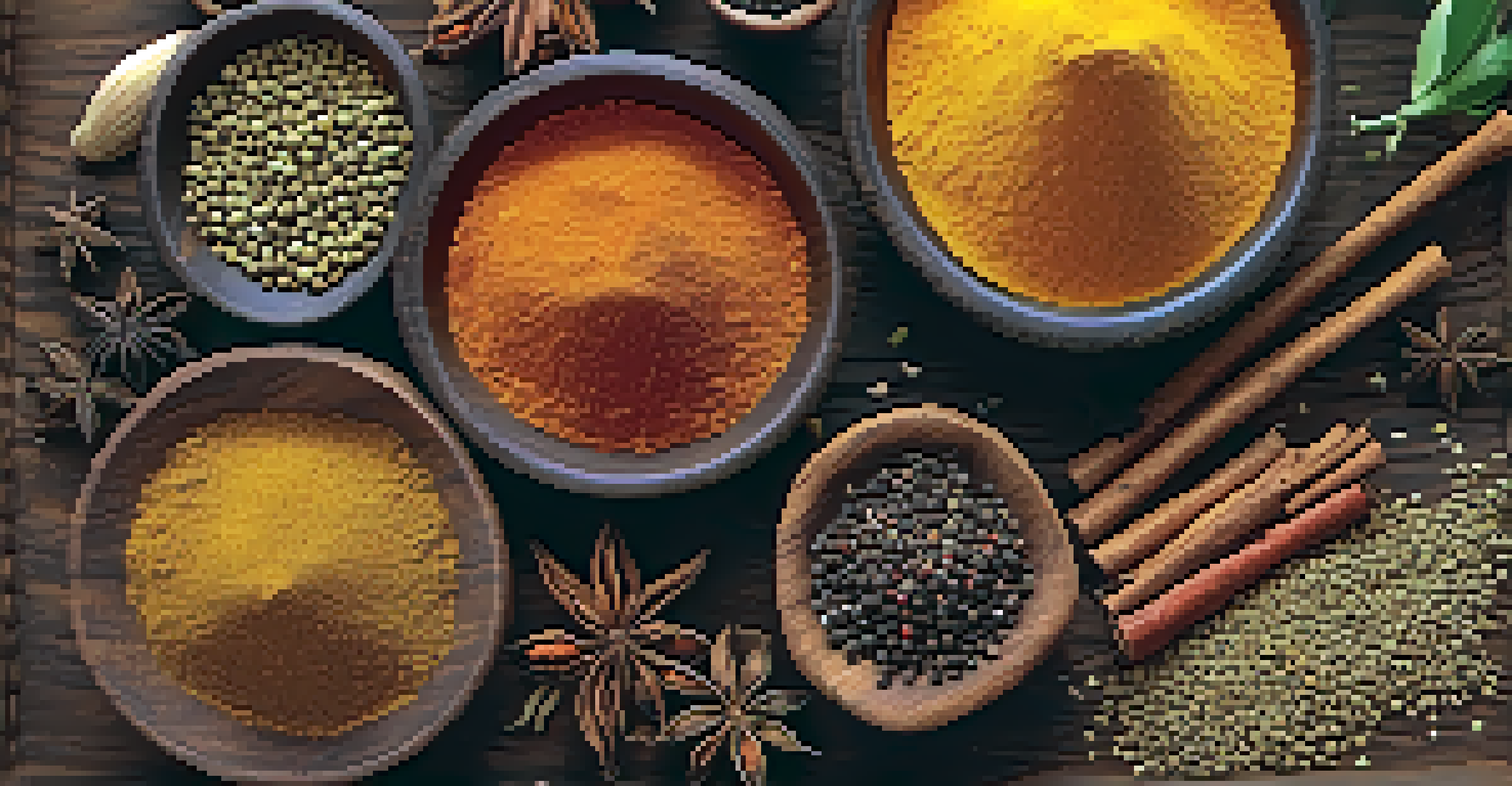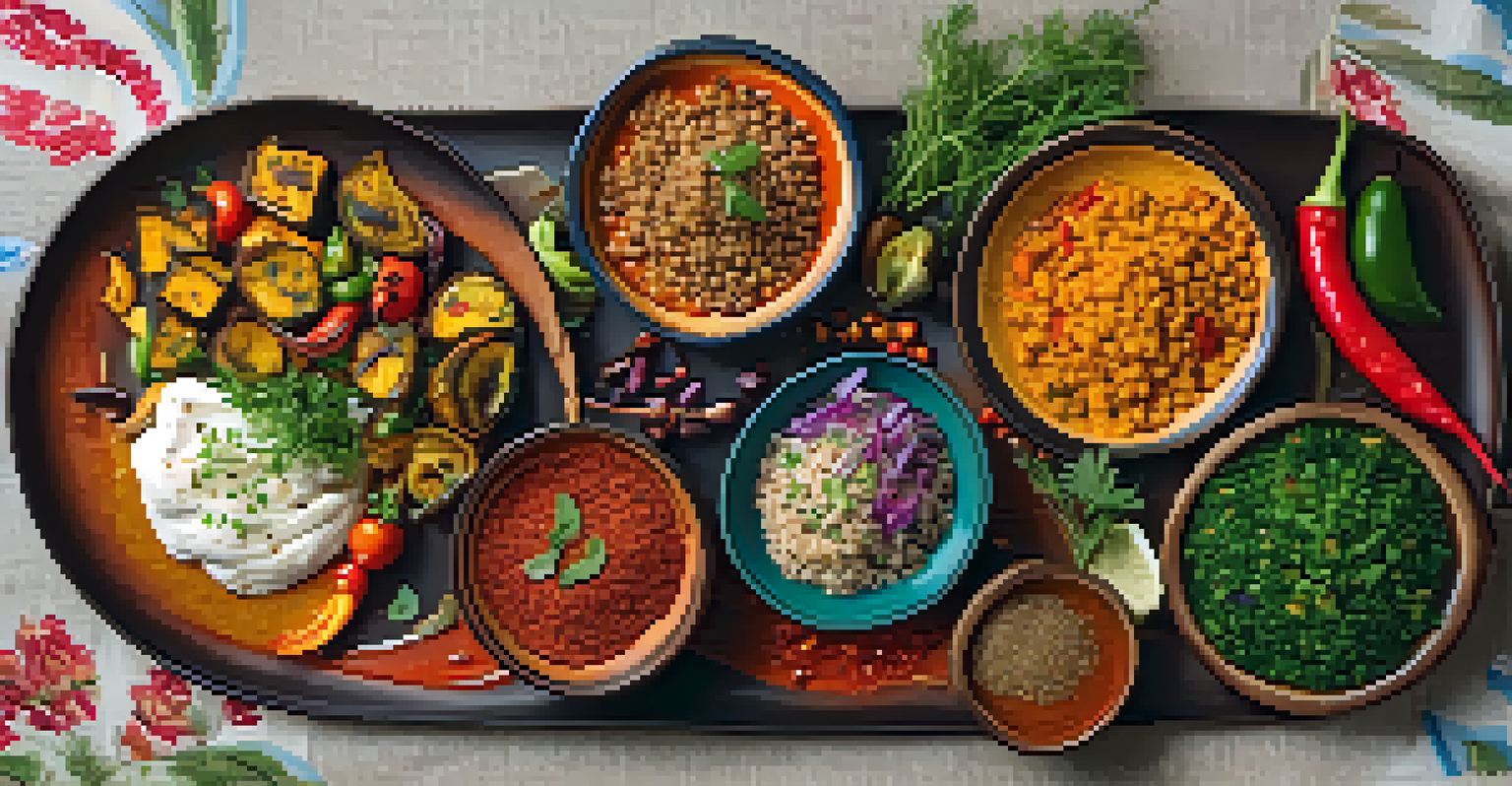The Art of Blending Spices for Vegan Meal Prep

Understanding the Basics of Spice Blending
Spice blending is both an art and a science, especially in vegan meal prep. By understanding the basic flavor profiles of spices, you can create harmonious blends that enhance your dishes. Think of spices as colors on an artist's palette; each one contributes to the overall flavor canvas you’re creating.
Spices are the vitamins of the kitchen.
Common spices for vegan cooking include cumin, turmeric, coriander, and paprika. Each brings a unique flavor and aroma, transforming your meals from mundane to extraordinary. For instance, cumin offers a warm, earthy note, while turmeric adds a vibrant color and a hint of bitterness.
By learning how to combine these spices effectively, you can tailor your blends to suit different cuisines, from Indian to Mediterranean. This not only broadens your culinary horizons but also makes your meal prep more exciting and flavorful.
Choosing Quality Spices for Optimal Flavor
The quality of your spices significantly impacts the flavor of your meals. Fresh, high-quality spices can elevate even the simplest dishes, while stale ones can leave your food flat and uninspired. When possible, opt for whole spices and grind them as needed to preserve their potency.

Consider purchasing spices from local markets or specialty stores where turnover is high, ensuring freshness. You can often find unique blends or single spices that you won’t encounter in the grocery store. Experimenting with lesser-known spices can add a fun twist to your vegan meal prep.
Mastering Spice Blends Enhances Flavor
Understanding the basics of spice blending can transform your vegan cooking by creating harmonious and exciting flavor profiles.
Additionally, storing your spices properly is crucial. Keep them in airtight containers away from light and heat to maintain their flavors for longer. This simple step can make a world of difference in your cooking.
Creating Your Signature Spice Blend
Every chef has a signature spice blend that defines their cooking style. To create your own, start by choosing a base spice that you love, such as smoked paprika or garlic powder. From there, add complementary spices that enhance and balance the flavors.
Cooking is like love. It should be entered into with abandon or not at all.
For example, if you start with smoked paprika, consider adding cumin for warmth, and a pinch of cayenne for heat. The key is to taste as you go, adjusting the ratios until you find a blend that excites your palate. This process is not only enjoyable but also a great way to personalize your meals.
Once you’ve perfected your blend, remember to write it down! This way, you can recreate your signature flavor in future meals. Plus, sharing your custom blend with friends can be a delightful way to introduce them to the joys of spice blending.
The Importance of Balance in Flavor Profiles
When blending spices, achieving balance is essential. A well-balanced spice blend will have a mix of heat, sweetness, bitterness, and acidity, creating a multi-dimensional flavor experience. Think of it as a well-composed piece of music, where each note contributes to the overall harmony.
For instance, if you’re making a curry, you might want to balance the warmth of chili powder with the sweetness of cinnamon and the acidity of lime juice. This interplay of flavors can elevate your dish from good to outstanding, making it more enjoyable for you and your guests.
Quality Spices Make a Big Difference
Using fresh, high-quality spices elevates your dishes, while proper storage ensures their flavor remains intact.
Don’t be afraid to experiment! Keep notes on what works and what doesn’t, and soon enough, you’ll develop an intuitive sense of how to balance flavors in your spice blends.
Incorporating Fresh Herbs with Spices
While spices provide depth and complexity, fresh herbs add brightness and freshness to your dishes. Combining spices with fresh herbs can create an exciting contrast that enhances the overall flavor. Think of fresh basil or cilantro as the finishing touch that brings your meal to life.
When using fresh herbs, add them towards the end of cooking to preserve their flavor and aroma. For example, sprinkle fresh parsley over a hearty lentil stew just before serving for a burst of color and flavor. This technique can elevate the presentation and taste of your vegan meal prep.
Experiment with various combinations to discover which herbs complement your spice blends best. This exploration can lead to delightful surprises and new favorite recipes.
Spice Blends Around the World
Exploring spice blends from different cultures can inspire your vegan meal prep. Each cuisine has its unique spices and blends that can transform simple ingredients into exciting dishes. For instance, consider experimenting with Garam Masala from Indian cuisine or Ras el Hanout from North Africa.
These blends often encapsulate the essence of their respective cuisines, allowing you to bring global flavors to your kitchen. Incorporating them into your recipes not only adds variety but also educates you about different culinary traditions.
Balance is Key in Flavor Profiles
Achieving a balance of heat, sweetness, bitterness, and acidity in your spice blends enhances the overall taste experience.
By trying out these international blends, you’ll broaden your culinary repertoire and learn how to adapt flavors to suit your personal tastes and dietary preferences.
Storing and Using Spice Blends Effectively
Once you've created your spice blends, knowing how to store and use them effectively is key. Keep your blends in dark, airtight containers to protect them from moisture and light, which can degrade their flavor over time. Labeling containers with the blend name and date made can help you keep track of freshness.
When it comes to using your blends, start with a small amount and adjust according to your taste. Remember, you can always add more, but you can’t take it out once it’s been added. This approach helps you avoid overwhelming your dishes.

Also, consider incorporating your spice blends into marinades, dressings, and even sauces for added depth. This versatility not only enhances the flavor of your meals but also makes your cooking process more efficient and enjoyable.